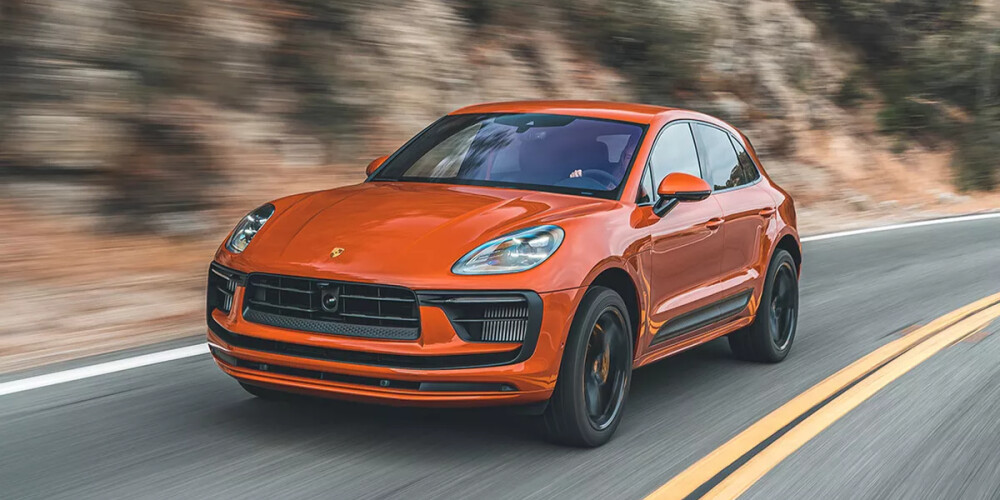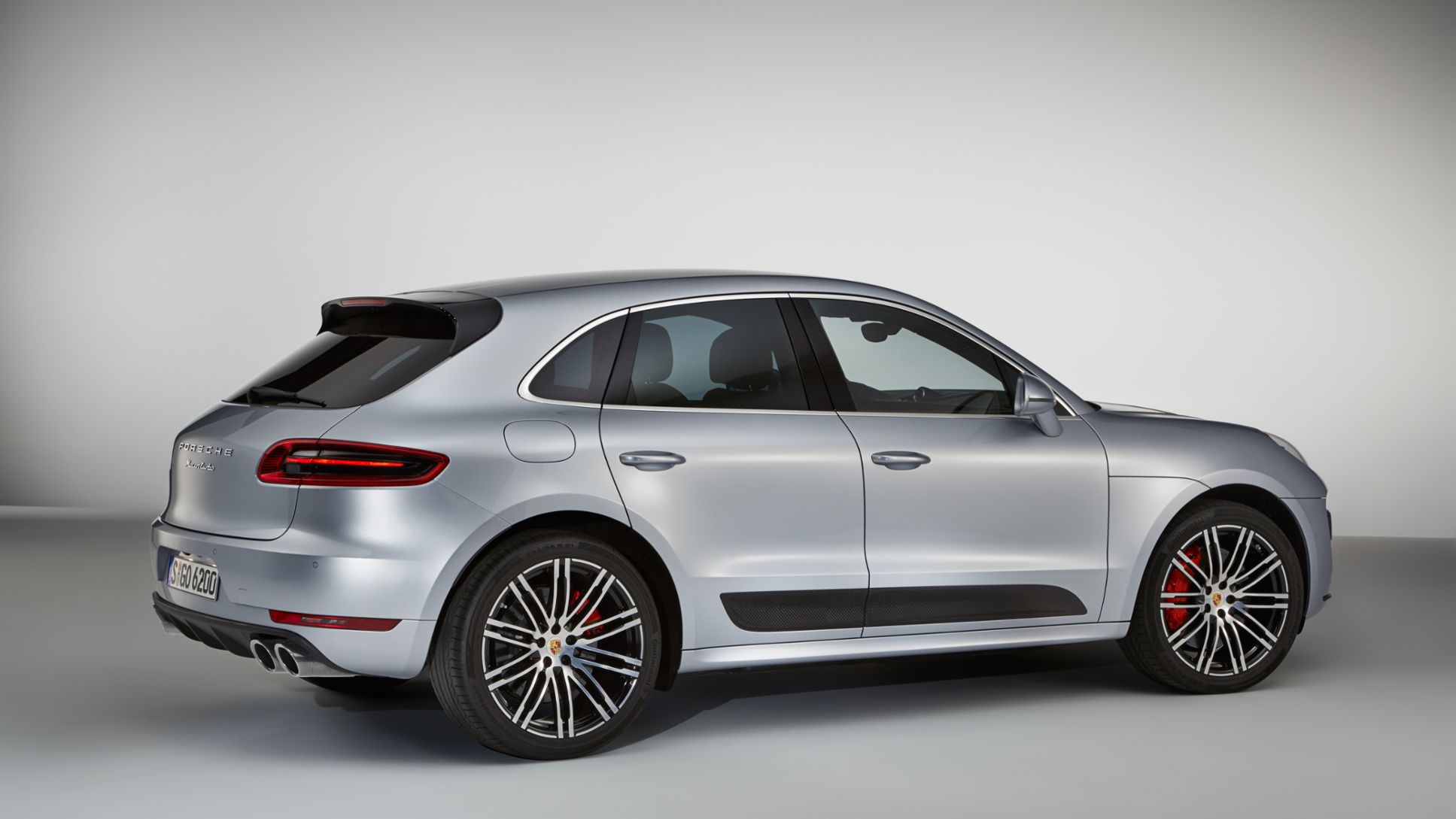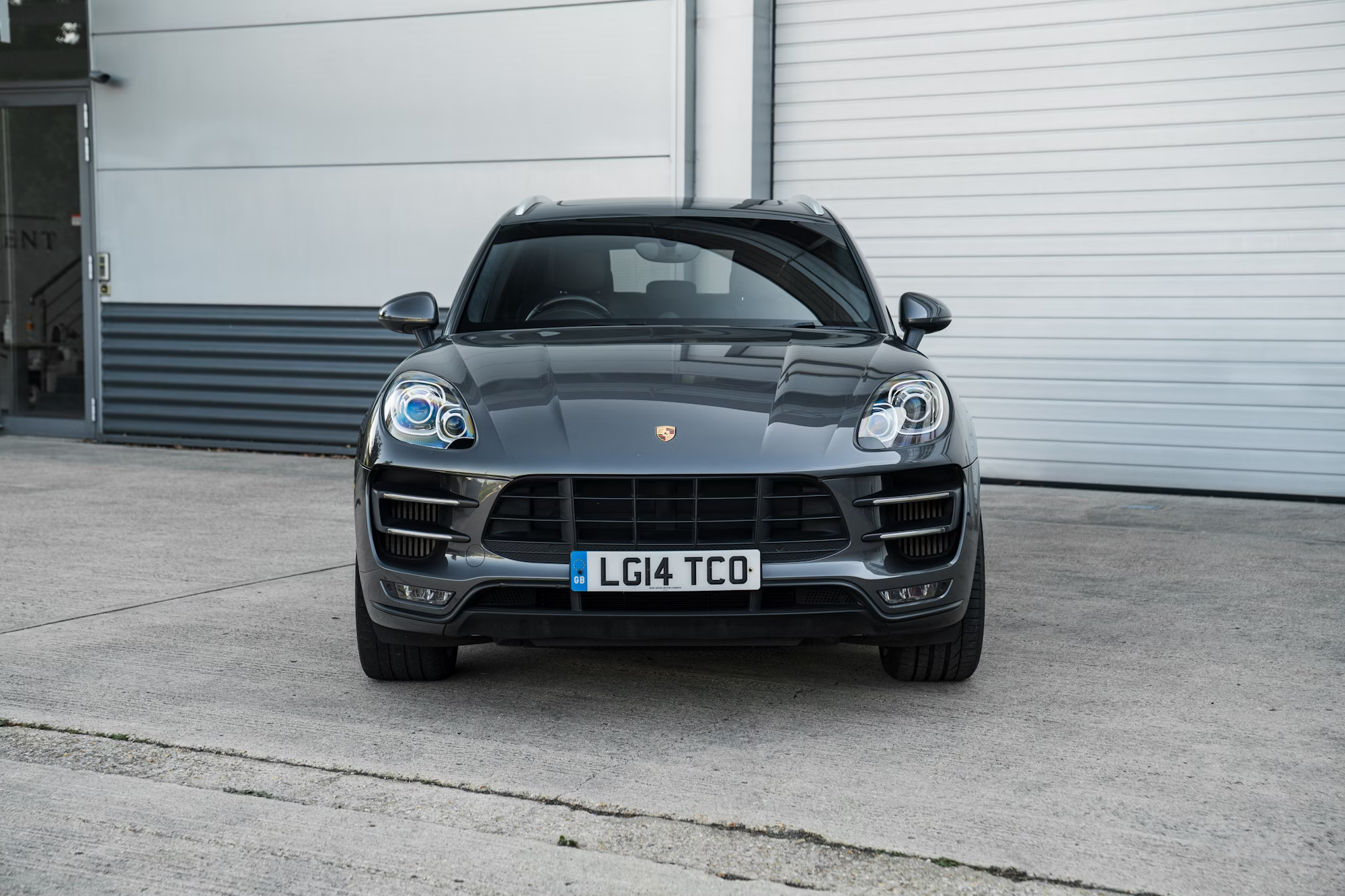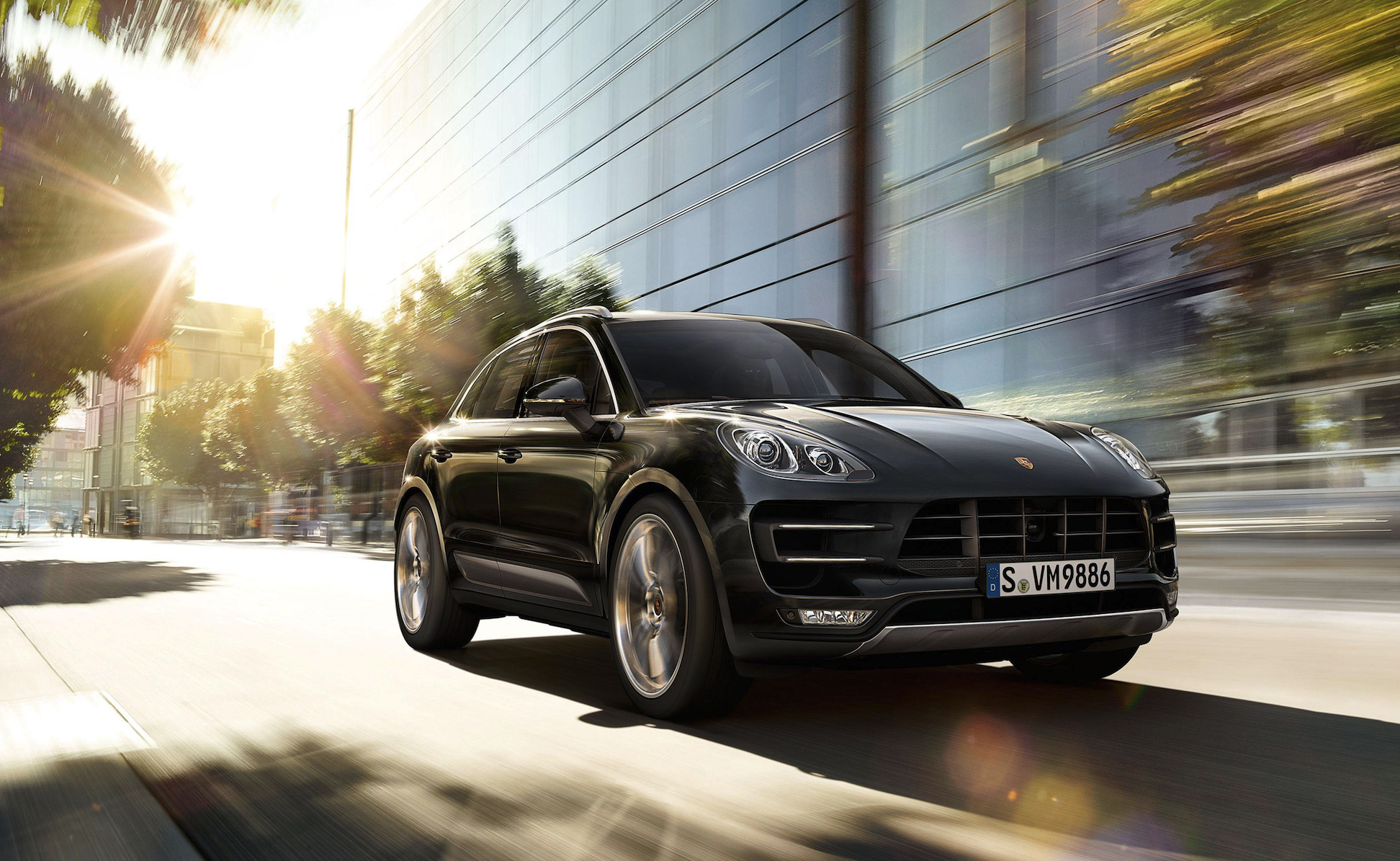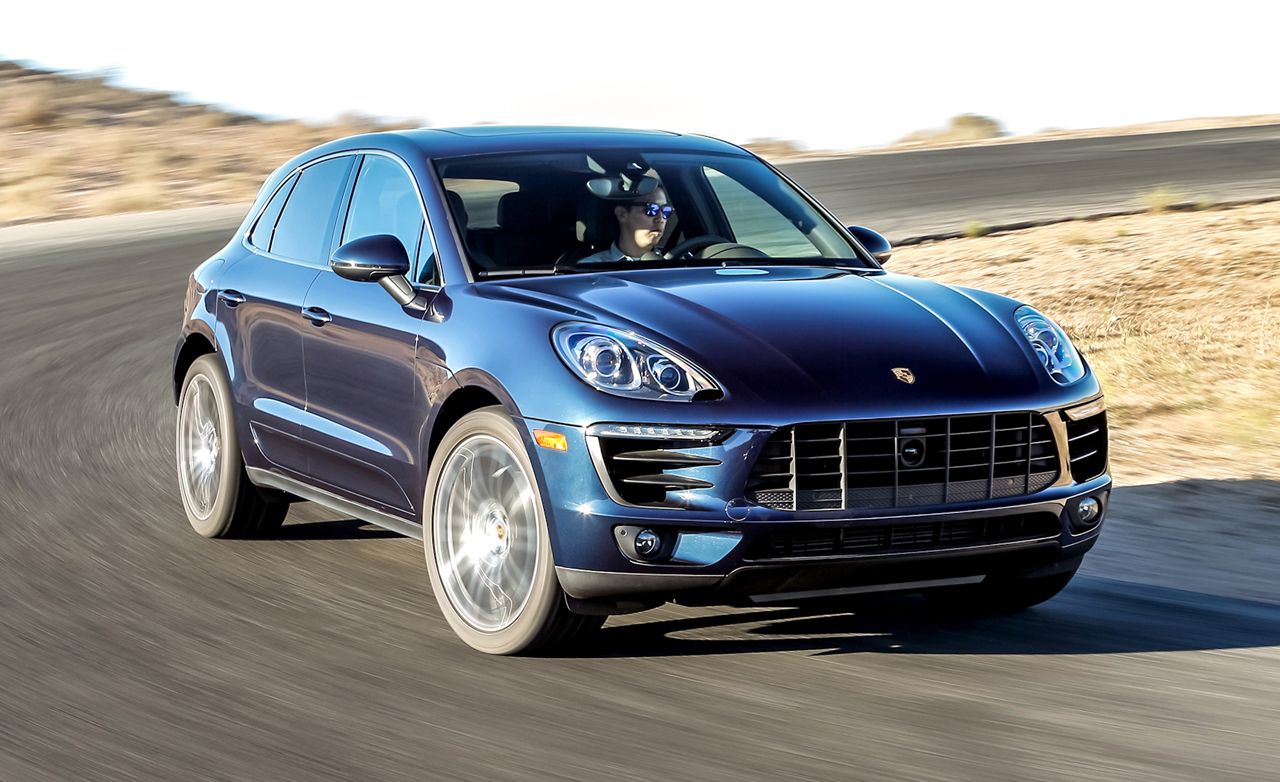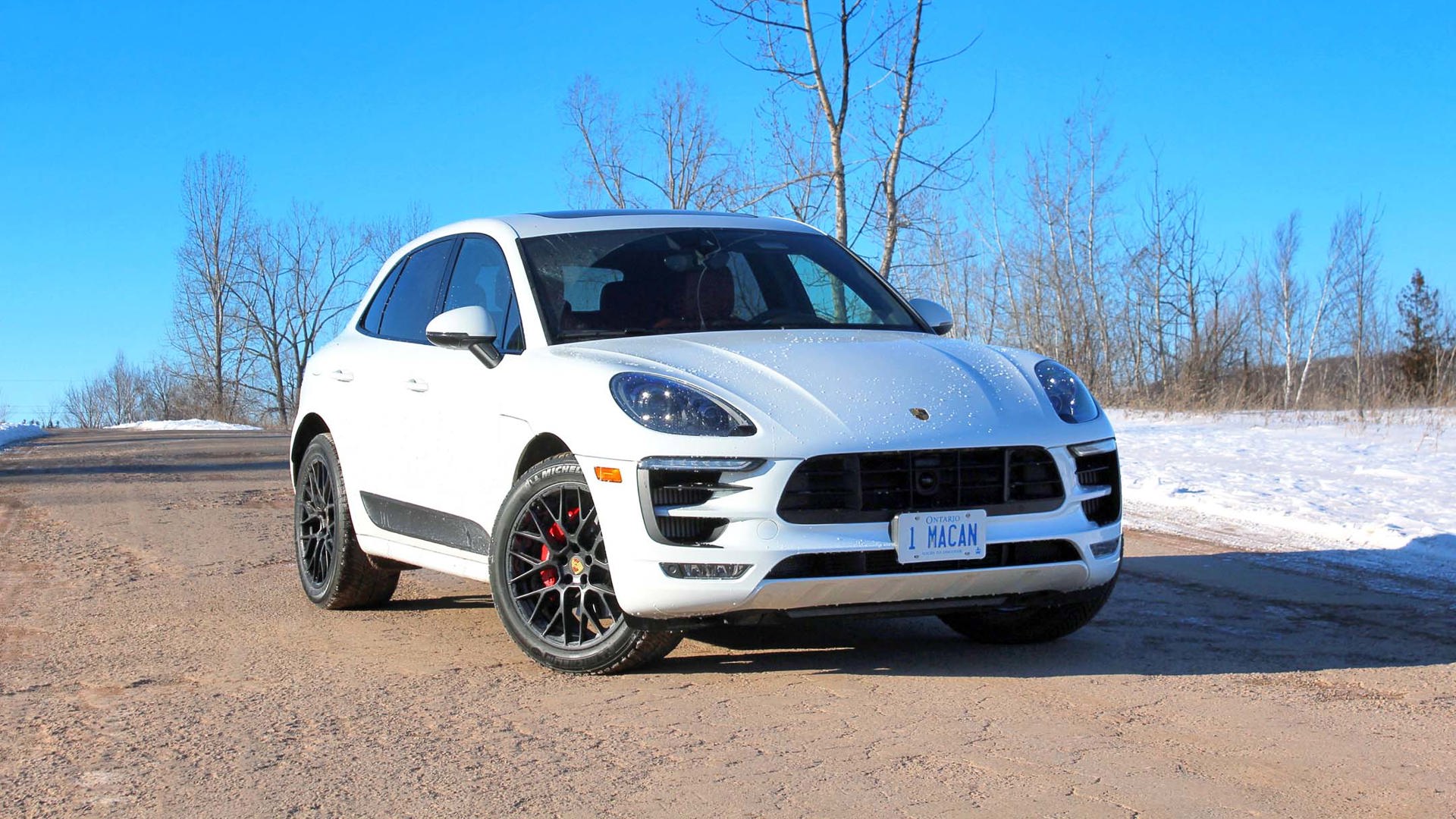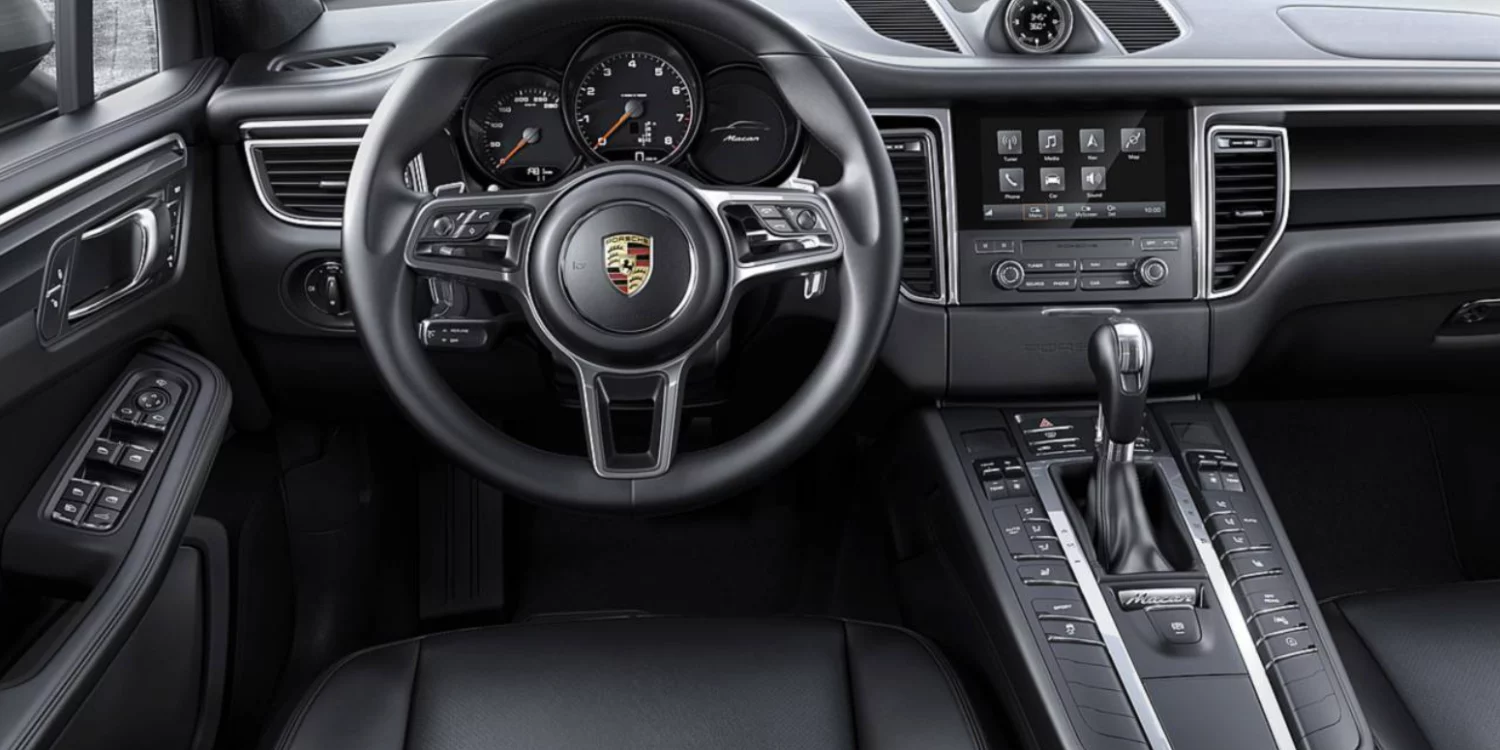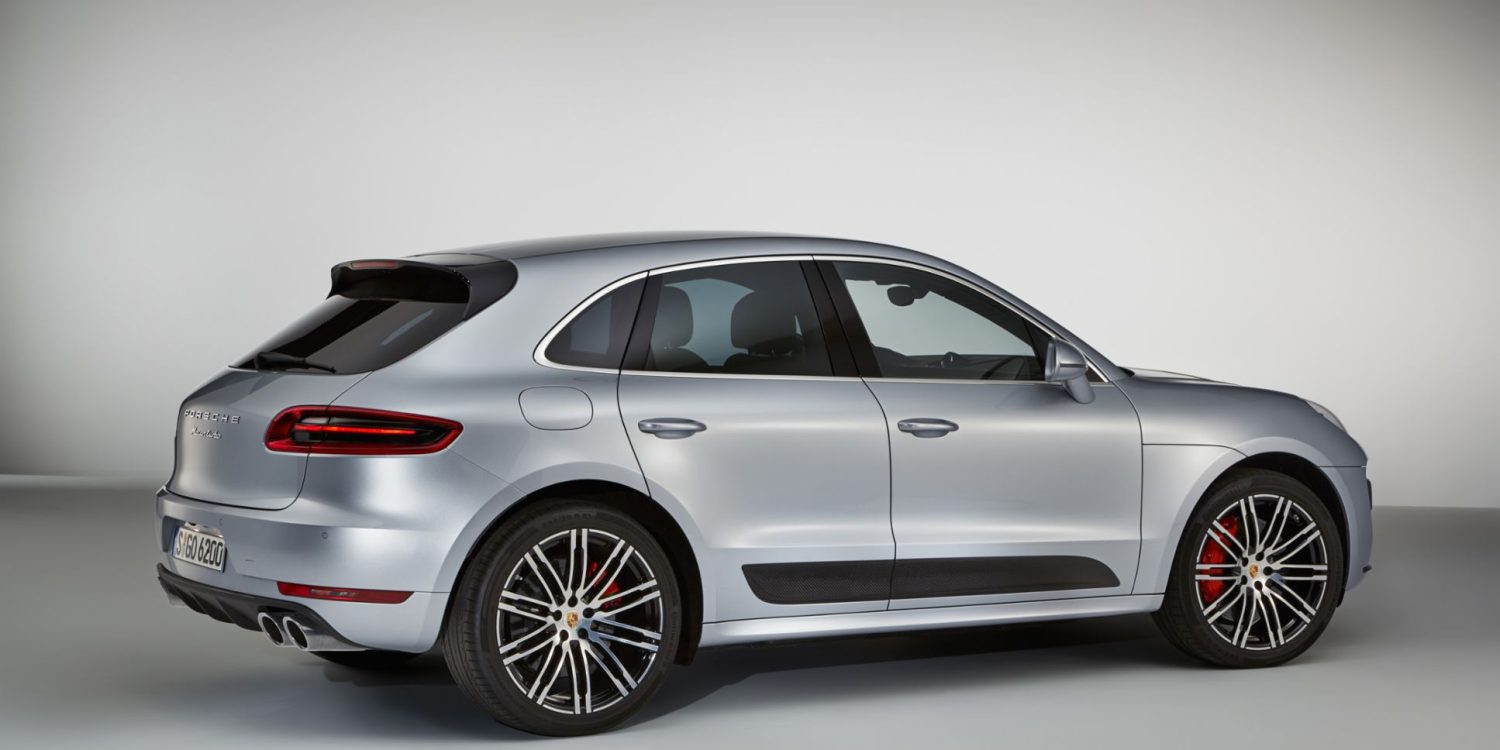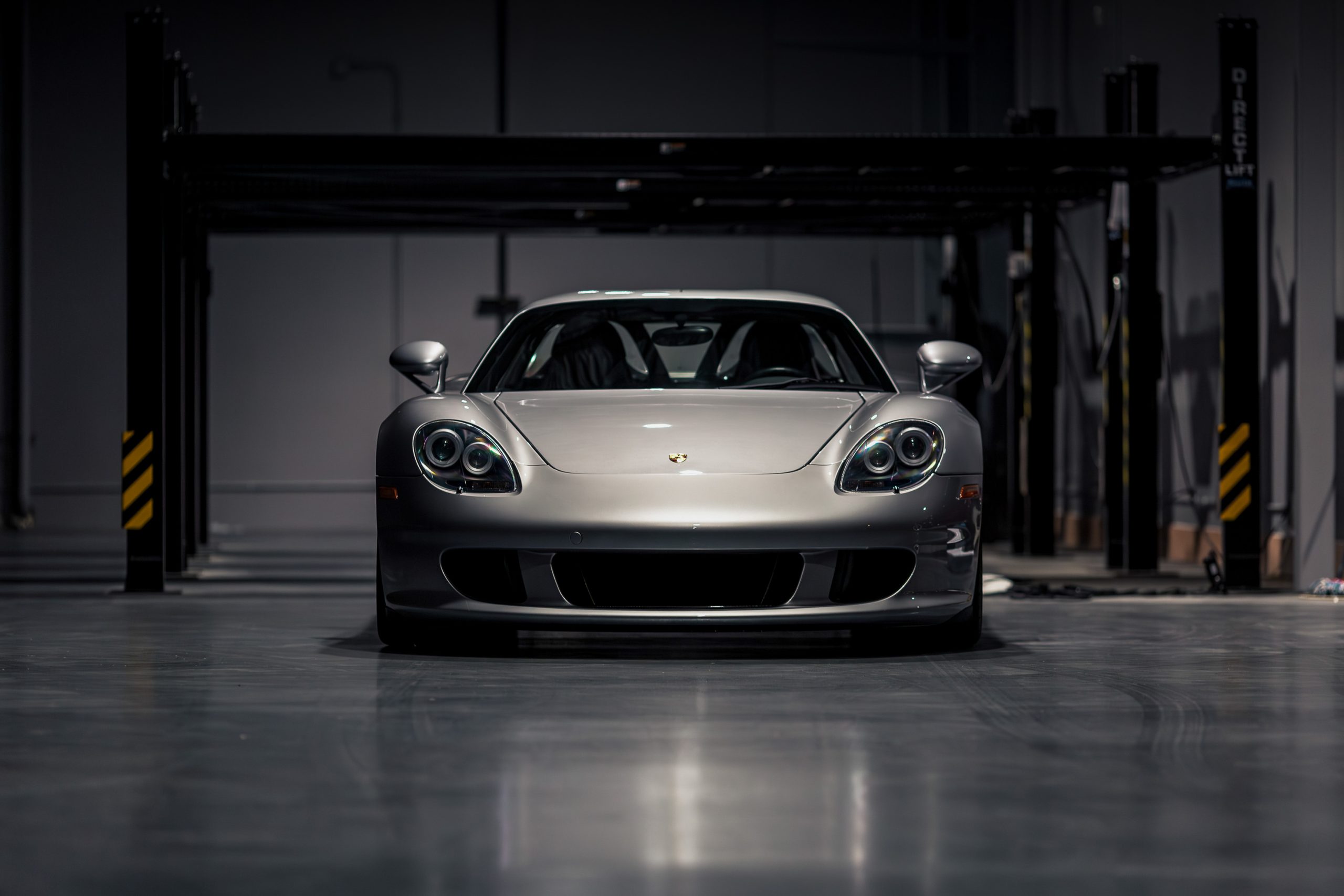1st Generation Porsche Macan Buyer's Guide
Buying a first generation Macan? Our Guide Covers Key Models, Potential Issues, Values, Tips & More.
PLEASE NOTE: For this post, we are focused on buying a used Macan. Since the current Macan is still on sale, you should check out our nNew Macan buying guide. Also note, that the electric Macan is considered the second generation Macan so won't be covered either.
The first-generation Porsche Macan (2015–2025) has become one of the smartest and most rewarding choices in the used luxury SUV market. Introduced as Porsche’s entry into the compact SUV segment, the Macan immediately set itself apart by delivering a driving experience that felt far closer to a sports car than a soft-roader. Built on a re-engineered Audi platform but infused with Porsche DNA—from the steering feel to the chassis tuning—the Macan became the go-to for drivers who wanted utility without sacrificing engagement. Whether you’re looking at a base model or a high-performance GTS or Turbo, the Macan remains one of the most dynamically capable SUVs ever built.
As these vehicles enter their second and even third ownership cycles, buying used presents a compelling value. Earlier models have already seen significant depreciation, making them accessible without compromising on performance or build quality. Later post-2019 examples bring modern tech and refined powertrains, and enthusiast-focused trims like the GTS and Performance Pack Turbo are increasingly sought after for their sharp handling and character. The sweet spot? Many experts point to a 2017–2021 Macan S or GTS, where performance, tech, and pricing intersect beautifully.
In this Ultimate First-Gen Macan Buyer’s Guide, we walk you through every key model and variant, outline common issues, explain what features and options are worth paying up for, and help you navigate market pricing, reliability insights, and ownership expectations. We’re focused solely on the used Macan market—no EVs or brand-new showroom models here—just real-world advice to help you make a smart, informed, and enthusiast-approved decision.
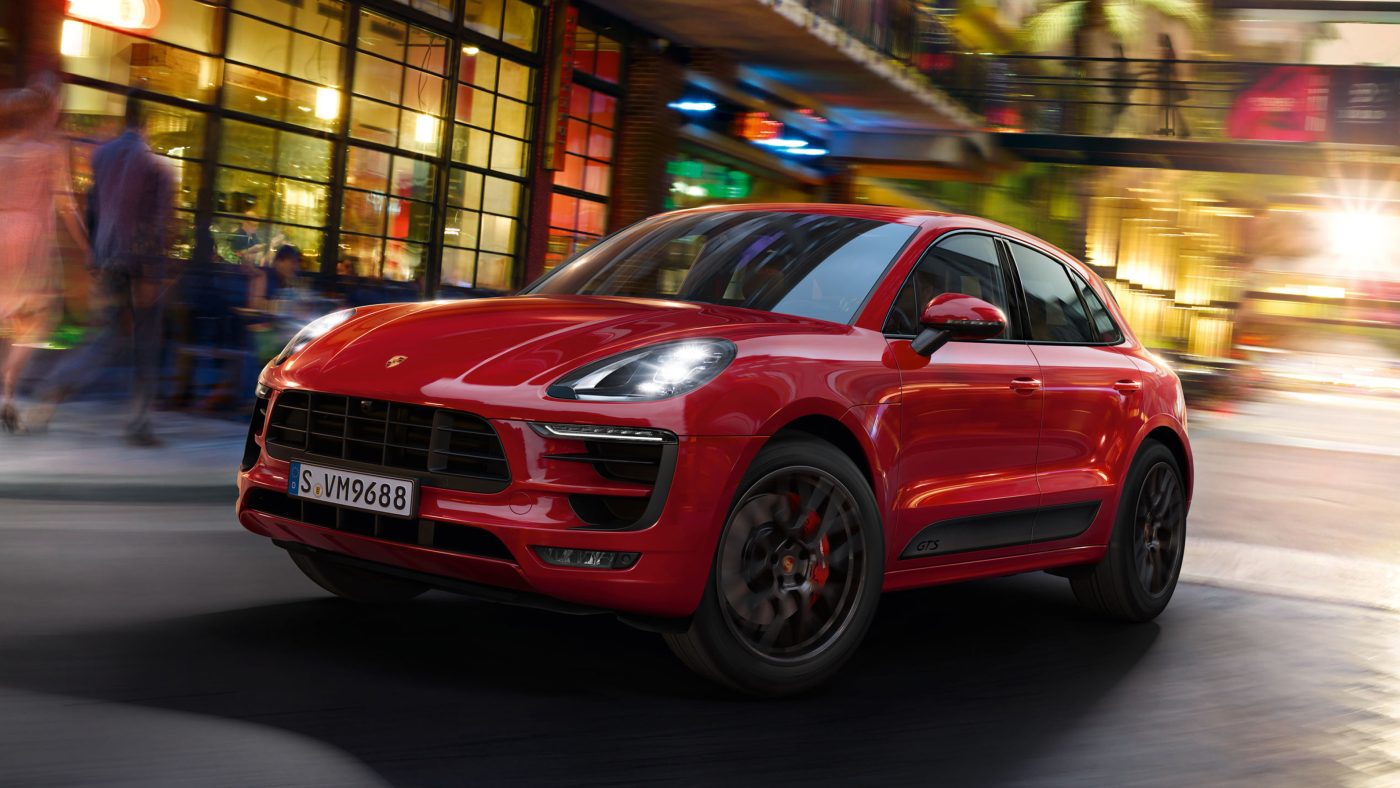
Why's the 1st Gen Porsche Macan a Great Used SUV
The first-generation Porsche Macan (2015–2021 in the U.S.) has become one of the smartest used luxury SUV buys on the market, and for good reason. It was Porsche’s answer to the compact luxury crossover segment—a category already crowded with options from BMW, Audi, and Mercedes—but the Macan quickly carved out a unique niche. Where rivals often leaned heavily on comfort and tech, the Macan stood apart by offering genuine sports car DNA in a compact SUV form. It didn’t just “handle well for an SUV”—it handled well, full stop. That sharp steering, composed chassis, and rear-biased all-wheel drive system meant it delivered a driving experience more akin to a hot hatch or a Cayman than anything else in its class.
What also makes the first-gen Macan a compelling used buy is its engineering pedigree and long production cycle, which allowed Porsche to refine it year after year. Built on a heavily revised Audi Q5 platform, Porsche reworked almost every mechanical component—brakes, suspension, steering, and drivetrain—to deliver a uniquely Porsche experience. The Macan S and Turbo variants, in particular, with their powerful V6 engines, offer brisk acceleration and an addictive sound, while even the base 2.0L turbo-four feels lively and well-balanced thanks to the dual-clutch PDK transmission. For buyers seeking a compact SUV that’s actually fun to drive, the Macan remains the clear standout in its class.
Inside, the first-gen Macan features a cabin that—while a bit button-heavy by modern standards—is solid, luxurious, and ergonomically driver-focused. The materials are top-notch, and Porsche's attention to detail shines through in everything from seat comfort to steering wheel feel. Later model years (2019–2021) added important upgrades, including a much-improved touchscreen infotainment system and subtle design tweaks that help modernize the interior without losing the car’s core character. Buyers shopping for a used Macan from these years will benefit from newer tech while still avoiding the steep depreciation of a brand-new vehicle.
For buyers looking at the premium used SUV market, the first-gen Macan offers a rare combination: Porsche performance, daily drivability, long-term reliability, and solid resale value. It's sporty without being impractical, luxurious without being overcomplicated, and has proven to be more reliable than many of its European peers. With proper maintenance and a clean history, a used Macan can deliver years of spirited, comfortable driving—making it a standout choice for anyone who wants a truly premium compact SUV that doesn’t just look the part but drives like it belongs on a backroad.
1st Gen Macan Variants - A Quick Primer for Potential Buyers On The Variants & Specials To Think About.
We already have ultimate guide to the first generation Porsche Macan so we don't want to repeat everything here. Instead, we will give you a quick primer and summary about the main first generation Macan variants, some of the core model year changes and we will talk about some special editions worth noting as you think about your potential purchase.
Key Variants & Differences
The Porsche Macan debuted in 2014 and has been a cornerstone of Porsche’s lineup ever since, combining the practicality of a compact SUV with true Porsche dynamics.
As with most Porsche models, the Macan evolved over time with multiple trims, facelifts, and drivetrain updates—all of which play a big role in performance, feel, and desirability. Understanding the key variants and their differences is essential for any buyer or enthusiast looking at the Macan 95B platform, which spans model years 2015 onwards in its first generation.
Macan (Base)
The entry-level Macan debuted in the U.S. in 2017, featuring a 2.0-liter turbocharged inline-four with around 248–261 horsepower depending on the model year. While it lacks the punch of the V6-powered models, it still uses Porsche’s excellent 7-speed PDK dual-clutch transmission and benefits from the same basic chassis and AWD system.
It’s surprisingly fun to drive for a base model—more refined and better balanced than most rivals—but performance-focused drivers may find it underwhelming. That said, for daily driving or entry into the Porsche brand, it’s a smart, efficient choice.
Macan T
This was a late addition to the model line (2022). The Macan T uses the same 2.0L turbo-four as the base model but receives performance-oriented upgrades previously reserved for higher trims—PASM adaptive suspension, Sport Chrono Package, unique suspension tuning, and exclusive trim accents. It's meant to be a lightweight, driver-focused alternative, emphasizing agility and handling rather than raw power. While it arrived after late, it reflects Porsche’s growing effort to build enthusiast-focused base-engine variants.
Macan S
The Macan S has always been the heart of the lineup. Early models (2015–2018) featured a 3.0-liter twin-turbo V6 producing 340 horsepower, delivering lively acceleration and excellent composure at speed.
With the 2019 facelift, Porsche swapped in a 3.0-liter single-turbo V6, increasing output to 348 hp and improving efficiency and mid-range torque. The S offers a perfect balance of performance, comfort, and value—making it the most common and arguably most well-rounded choice in the Macan family. With optional PASM, the Macan S becomes genuinely engaging on twisty roads, while still refined enough for commuting and family use.
Macan GTS
The GTS is widely considered the driver’s Macan. Launched in 2017, it initially used a 360-hp version of the 3.0L twin-turbo V6 found in the Macan S, but with sharper throttle tuning, standard PASM, a lower ride height, and a standard sport exhaust system. It stood out for its handling precision and visceral character.
With the 2020 update, the GTS returned even more focused: powered by a 2.9-liter twin-turbo V6 (shared with the Turbo) producing 375 hp. With revised suspension, upgraded brakes, and sportier interior/exterior elements, the GTS is the sweet spot for enthusiasts who want the most engaging Macan without stepping up to the full Turbo price tag.
Macan Turbo
At the top of the Macan hierarchy early on sat the Turbo, originally launched with a 3.6-liter twin-turbo V6 making 400 hp (or 440 hp with the optional Performance Package). It delivered astonishing performance for a compact SUV—0–60 mph in around 4.4 seconds—and came with standard air suspension, larger brakes, and luxury-focused trim upgrades.
In 2020, the Turbo returned with the 2.9L twin-turbo V6, now tuned for 434 hp, and further improved refinement and power delivery. It was removed as a variant during the 2021 update.
Summary
The brilliance of the Macan 95B lineup lies in how Porsche gave each variant a clear and purposeful identity. The Base and T offer accessible Porsche DNA with a focus on agility and daily usability. The S is the solid all-rounder—fast, refined, and practical—while the GTS injects emotion, noise, and handling precision for enthusiast drivers. And for those who want a compact SUV with the performance of a sports sedan, the original Turbo delivers effortless speed and top-tier luxury.
Model Year Changes (2014-Present)
2015–2016: The Launch Years
The Macan made its U.S. debut for the 2015 model year with two initial trims: the Macan S, powered by a 3.0L twin-turbo V6 (340 hp), and the Macan Turbo, with a 3.6L twin-turbo V6 producing 400 hp. Both used Porsche’s 7-speed PDK dual-clutch transmission and featured rear-biased all-wheel drive. These launch years established the Macan as the most driver-focused SUV in its class.
2017: Introduction of the Base Macan and GTS
For 2017, Porsche significantly broadened the lineup. A new base Macan arrived in the U.S. with a 2.0L turbocharged inline-four, offering around 252 hp and improving fuel efficiency while reducing the entry price point. It retained the PDK transmission and AWD, maintaining Porsche's performance DNA even at the base level. The enthusiast-favorite Macan GTS was also introduced this year, using a 360-hp version of the S’s V6 but with tighter suspension, standard PASM, and a sport exhaust system. Visually, it slotted between the S and Turbo but offered sharper handling and more character—quickly becoming a cult favorite.
2018: Minimal Changes Before the Refresh
The 2018 model year saw very few changes, as Porsche prepared for the Macan’s first major update. Trim levels and powertrains remained essentially the same as in 2017, though option packages and infotainment systems saw slight tweaks. It was the final year of the original pre-facelift styling with the split rear taillights and smaller infotainment screen.
2019: First Major Refresh (Macan 95B.2)
2019 marked the Macan’s first significant facelift, often referred to as the 95B.2 update. Visually, it brought a sharper front fascia, updated lighting with LED headlights, and a full-width LED rear light bar, aligning the Macan with Porsche’s newer design language. Inside, the center touchscreen grew to 10.9 inches and introduced a much more modern infotainment system with faster response and a cleaner interface. The base Macan carried over with the 2.0L turbo engine (248 hp), but the Macan S underwent a major change—replacing the old twin-turbo 3.0L V6 with a new single-turbo 3.0L V6 producing 348 hp, offering more mid-range torque and better efficiency.
2020: GTS Returns with More Power
In 2020, Porsche reintroduced the Macan GTS, now powered by the same 2.9L twin-turbo V6 used in the Panamera and Cayenne, tuned to produce 375 hp. This was a substantial upgrade over the previous GTS, giving it more power than the S and positioning it closer to the Turbo in outright performance. The new GTS also featured sportier suspension calibration, a standard sport exhaust, and blacked-out trim for a more aggressive appearance. This year also marked the retirement of the original 3.6L engine from the Macan Turbo.
2021: Macan Turbo with 2.9L Engine
The Macan Turbo returned in 2021 with the 2.9L twin-turbo V6, now making 434 hp. This effectively replaced the old 3.6L twin-turbo unit, giving the Turbo better throttle response and refinement. Despite the shared engine family with the GTS, the Turbo had higher output, a more comfort-oriented suspension tuning (though still highly capable), and a more premium focus. This was the final full year before the second facelift.
2022: Second Facelift (Macan 95B.3)
The second major update to the Macan arrived for the 2022 model year. While still based on the 95B platform, it brought noticeable visual and interior enhancements. Externally, the bumpers were redesigned with more angular styling and color-coded accents. Inside, the center console was reworked to remove most physical buttons in favor of haptic touch controls, similar to the Panamera and Taycan. Mechanically, Porsche discontinued the Macan Turbo, and instead gave the Macan GTS the top spot—now with 434 hp, essentially matching the outgoing Turbo’s performance but with a sportier, more aggressive tuning.
2023–2025: Final Evolution of the 95B
These years represent the final stretch of the internal combustion Macan, with no major hardware changes but minor tweaks to options and color choices. The trim structure now includes the Macan (base), Macan T (2.0L), Macan S (375 hp), and Macan GTS (434 hp). The GTS continues as the top performer, while the Macan T—introduced globally in 2022 and gradually rolled into North America—offered a more agile, lightly sport-tuned version of the 2.0L base model.
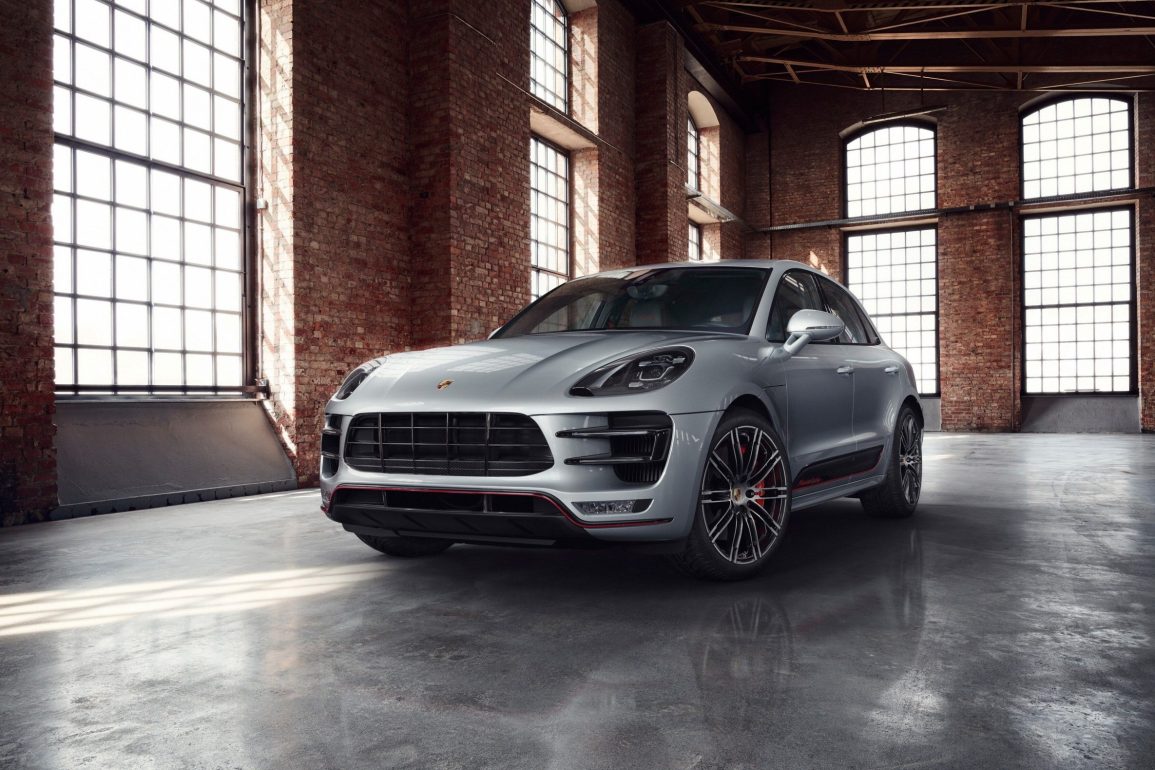
First Generation Porsche Macan Market Value & Pricing
The first-generation Porsche Macan (95B) has followed a fairly traditional luxury vehicle depreciation curve—though, as with most Porsches, certain trims and well-optioned examples hold their value noticeably better than others. Early models from 2015 to 2017, often referred to as 95B.1, have now experienced the bulk of their depreciation and represent some of the best values in the used Porsche market. You can often find base Macans or Macan S models from this era in the low-to-mid $20K range, depending on mileage, condition, and service history. These vehicles offer an affordable entry point into Porsche ownership, especially for buyers who prioritize driving dynamics over the latest tech.
However, the market reflects a clear hierarchy in trim desirability. The Macan GTS—particularly the 2017–2018 models—consistently commands a premium. These are enthusiast favorites thanks to their sharper handling, more emotional character, and lower production numbers. A well-kept GTS with moderate miles can still demand $35K to $45K or more, depending on spec and region. The same goes for the Turbo models, especially the Performance Package versions from 2017 and the updated 2020–2021 models with the 2.9L V6. These tend to hold their value better than more common trims due to their performance halo status.
Moving to the facelifted models (95B.2, 2019–2021), pricing begins to climb significantly. These versions feature the much-improved 10.9" infotainment system and revised powertrains, which make them feel much more modern. A 2019–2020 Macan S, for example, often sells in the $40K–$50K range, especially if well-optioned and with low mileage. The GTS and Turbo trims from this era remain in high demand, and clean examples can still fetch $55K–$70K, especially if CPO’d or loaded with premium options like air suspension, Sport Chrono, and upgraded wheels or paint.
The latest iteration, the 95B.3 (2022–2025), hasn’t yet seen significant depreciation. These cars are still quite new, and prices remain strong due to high demand and limited new car availability during and after the pandemic. A base or Macan T will still cost mid-$50Ks or higher used, while S and GTS models hover closer to their original MSRPs—especially if low mileage and highly optioned. At this point, you’re paying a premium for freshness and updated tech, not for depreciation savings. That’s why buyers looking for value tend to zero in on 2017–2021 Macan S and GTS models—they offer a compelling mix of modern equipment, strong performance, and a relatively settled place on the depreciation curve.
Overall, the Macan market reflects typical Porsche logic: rarer, performance-focused trims like the GTS and Turbo hold value best, while base and S models, though more plentiful, offer tremendous bang for the buck—especially if you prioritize driving feel over cutting-edge tech. As the first-gen Macan phases out and the electric version takes over, well-maintained ICE examples with desirable specs may become even more appealing to used buyers who still want that Porsche combustion experience.
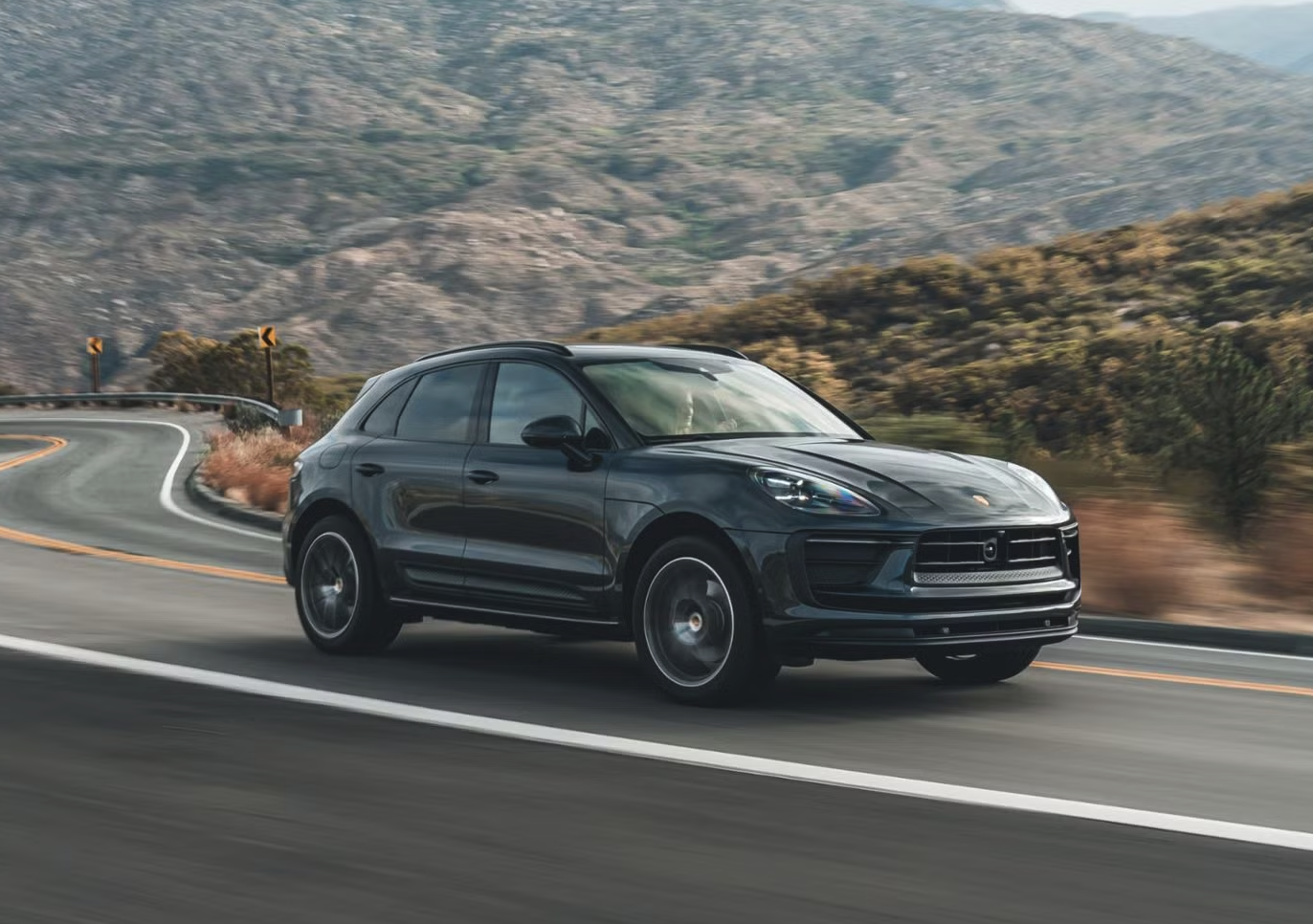
1st Gen Macan Driving Experience & What to Expect
What They Said at The Time
The Porsche Macan has consistently garnered acclaim for delivering a driving experience that defies typical SUV expectations. From its inception, automotive journalists have lauded its sports car-like handling, precise steering, and dynamic performance.
Car and Driver emphasized the Macan's exceptional ride and handling, stating,
"The ride is wonderfully damped and carefully controlled, and it's rare for a jolt from the pavement to throw the Macan off course. The steering is a tad lighter than it is in Porsche's sports cars, but it's still micrometer-accurate and pleasantly tactile."
The Macan GTS, in particular, has been highlighted for its engaging dynamics. Car and Driver noted,
The GTS remains impressively responsive and engaging, and is one of very few crossovers that feels as composed on a racetrack as on the street."
Even the base Macan models have been recognized for their dynamic capabilities. Car and Driver remarked that the base turbo four-cylinder Macan "feels sprightly around town," and the Macan S "really comes alive with the twin-turbo 2.9-liter V-6," offering a driving experience that is both competent and exhilarating.
In summary, the Porsche Macan stands out in the compact luxury SUV market by offering a driving experience that rivals that of sports sedans. Its combination of powerful engines, precise steering, and well-tuned suspension systems across various trims ensures that drivers seeking both practicality and performance will find the Macan a compelling choice.
What to Expect Today
The first-generation Porsche Macan (2015–present) delivers a driving experience that sets it apart from every other SUV in its class—and that’s not just marketing speak. From the very beginning, Porsche engineered the Macan to behave like a sports car in SUV clothing. Unlike most compact luxury crossovers that prioritize softness and insulation, the Macan was built with a focus on handling precision, steering feedback, and drivetrain performance. It feels planted, nimble, and responsive in a way that’s frankly shocking the first time you push it through a corner. Whether you’re driving a base model or a GTS, it carries itself with a sense of poise and athleticism that reminds you it shares DNA with a 911.
Performance varies depending on the variant, but the standard 2.0L turbo-four still delivers respectable acceleration and agility—especially when paired with the dual-clutch 7-speed PDK transmission, which shifts crisply and keeps the engine in its sweet spot. Step up to the Macan S or GTS, and you’ll find far more urgency: V6 power brings stronger midrange torque and a deeper soundtrack. The GTS and Turbo models are particularly rewarding for spirited drivers, offering sharper suspension tuning, more aggressive throttle mapping, and stronger brakes. These trims can easily run with hot hatches and sports sedans, making the Macan a rare SUV that feels genuinely exciting behind the wheel.
For daily driving, the Macan strikes an impressive balance. Ride quality—especially in models with air suspension or PASM (Porsche Active Suspension Management)—is composed and controlled, soaking up bumps without feeling floaty or disconnected. The cabin is quiet, materials are top-tier, and the seating position is spot-on for both comfort and visibility. Despite being Porsche’s smallest SUV, it still offers enough room for daily errands, school runs, and weekend getaways. While the cargo space isn’t class-leading, the Macan makes up for it in refinement and driver confidence. Parking and city driving are effortless thanks to responsive steering and a compact footprint.
As a weekend cruiser, the Macan is more than capable of putting a smile on your face. Find a winding road or open highway and the car’s character transforms—it becomes taut, alert, and eager to play. The steering is among the best in any SUV, offering real feel and weight, and the chassis rewards quick inputs without ever feeling top-heavy. The GTS, especially post-2020 with the 2.9L twin-turbo V6, is arguably the most fun-to-drive Macan of them all—blending usable power, responsive handling, and a great soundtrack in a very cohesive package.
For prospective buyers, the first-gen Macan offers a truly rare combination: sports car dynamics in a practical, daily-drivable SUV package. Whether you're coming from a performance car and need more space, or you're upgrading from a luxury SUV and want something with more engagement, the Macan delivers. It's not the biggest, flashiest, or most tech-heavy option in its class—but it's the one that drives like a Porsche should, and that’s what keeps it at the top of its segment, year after year.
Getting Real - Costs to Own & Maintenance
Owning a Porsche Macan—particularly a first-generation model—is a rewarding experience, but one that comes with the kinds of costs and responsibilities typical of a premium, performance-oriented SUV. The Macan is built to Porsche standards: tightly engineered, well-balanced, and far more fun to drive than its competitors. But keeping it running properly—especially as it ages—requires a clear understanding of the real-world ownership and maintenance expenses. Whether you’re considering a low-mileage certified pre-owned (CPO) Macan or a 2015 model that’s now out of warranty, here’s what you need to know.
Maintenance & Ownership Costs: What to Expect
Routine maintenance on a Macan is not excessive by Porsche standards, but it’s still above average compared to mainstream luxury SUVs. Expect to spend $1,200–$2,000 per year on regular upkeep for a Macan that’s out of warranty. This includes things like annual oil changes ($300–$400), brake fluid flushes ($250), spark plugs (around $800 every 40k–60k miles), and routine inspections. Porsche’s recommended service intervals are generally every 10,000 miles or once a year, whichever comes first. If you’re driving a GTS or Turbo model, budget more—larger brakes, sport suspension, and performance tires add to long-term costs.
Larger maintenance items—like brake pad and rotor replacement—can run from $1,000 to $2,500, depending on model and whether you go through a dealer or reputable independent specialist. Items like PASM (adaptive suspension) or air suspension (if equipped) are generally reliable but will be costly to repair if they fail outside of warranty. A good extended warranty or Porsche CPO plan can help mitigate those surprises.
Warranty Coverage: In vs Out
A major dividing line in Macan ownership costs comes down to whether the car is still under warranty. Porsche offers a 4-year/50,000-mile factory warranty, and many used Macans—especially those built before 2020—are now out of that coverage window. For these older vehicles, Porsche’s CPO (Certified Pre-Owned) program is highly recommended. It extends warranty protection up to 6 years with unlimited mileage from the original in-service date and provides peace of mind against major mechanical issues.
If you’re buying a 2015–2018 model, odds are that the car is no longer under any factory coverage. In those cases, it’s critical to see detailed service records and possibly consider an aftermarket warranty, especially if you’re looking at higher-performance trims. On the other hand, a 2019 or newer Macan—particularly 2021–2025 examples—will often still be within the factory warranty, offering a more predictable and lower-risk ownership experience for the next couple of years.
Parts Availability & Pricing
One of the advantages of owning a Macan is that it shares many components with other VW Group vehicles, including Audi and even VW models. As a result, parts availability is generally good, and many wear items like filters, brake components, and suspension parts are available through both Porsche and reputable OEM suppliers. You can save money sourcing parts through outlets like FCP Euro, Pelican Parts, or Suncoast Porsche, especially if you’re comfortable with DIY maintenance or working with an independent shop.
However, proprietary items like infotainment modules, interior trim, and Porsche-specific electronics can be expensive and are best sourced through Porsche directly. Labor rates at dealers remain high, so many long-term Macan owners choose to establish a relationship with a trusted Porsche-specialist independent mechanic.
Insurance Costs
Insurance for a Porsche Macan is moderate to high, depending on your location, driving history, and trim level. Expect annual premiums to range from $1,200 to $2,500, with base and four-cylinder models sitting on the lower end and GTS or Turbo variants commanding more due to their higher performance and repair costs. Coupes (in later years) or heavily optioned examples may also add to your premium.
If you’re financing the vehicle or buying it new, your lender will likely require comprehensive coverage, and Porsche Financial Services (PFS) may also mandate higher liability limits. Adding Porsche’s own Porsche Auto Insurance, where available, can sometimes offer better coverage for OEM parts and agreed-value replacement.
The Porsche Macan is one of the most dynamic, enjoyable, and well-built compact luxury SUVs you can own, but like any Porsche, it rewards proactive and informed ownership. If you’re shopping older, out-of-warranty models, be diligent: look for full service history, verify common maintenance milestones, and factor in future repairs. For newer Macans still under warranty or CPO, the costs are more predictable, and the overall experience is smoother.
Either way, owning a Macan is about more than practicality—it’s about driving pleasure, and for many, that’s well worth the premium. With the right planning and a well-chosen example, it can be one of the most satisfying SUVs to own in its class.
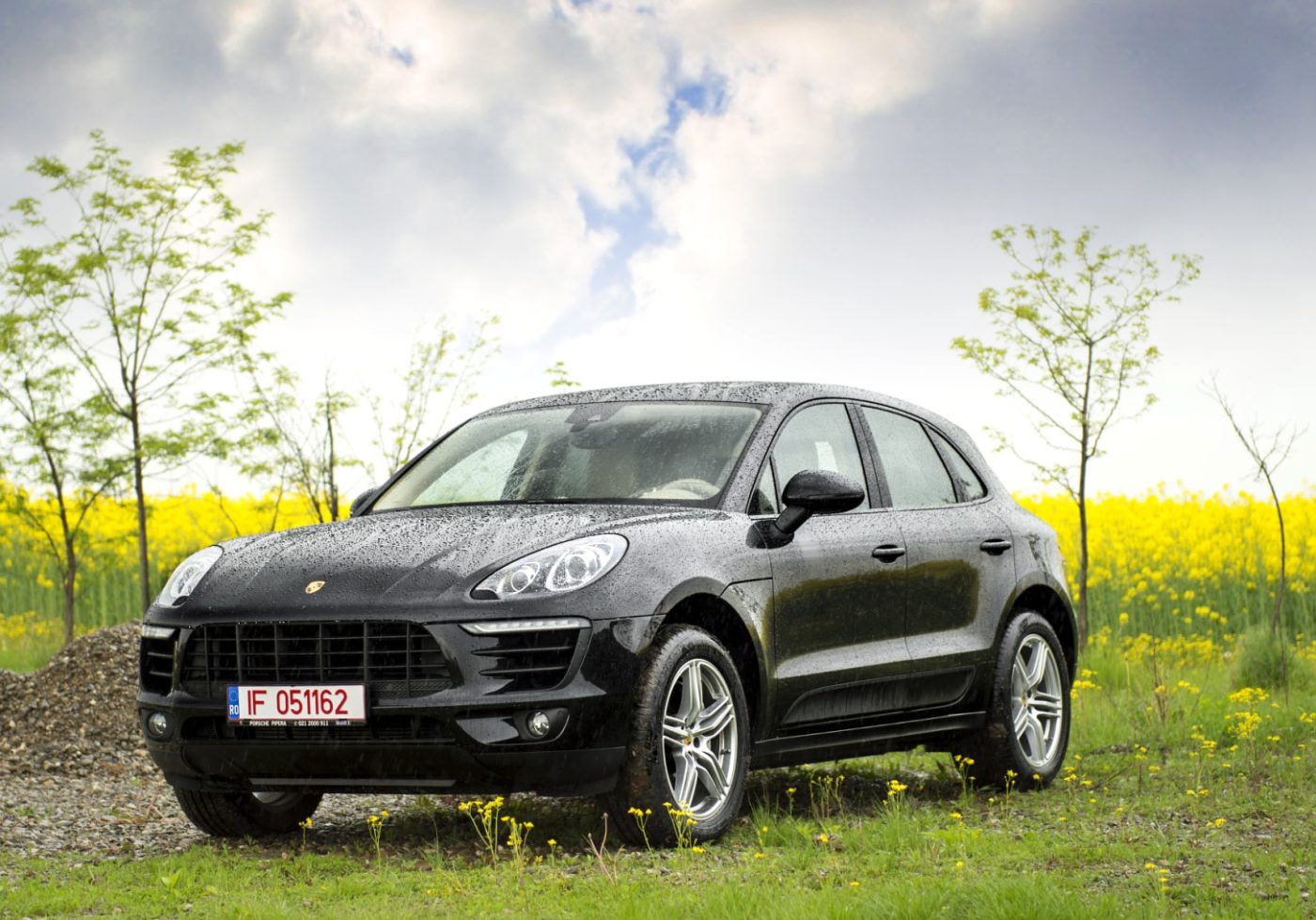
Common 1st Gen Porsche Macan Problems
What Buyers Should Know
While the first-generation Porsche Macan is widely regarded as one of the most reliable and best-built models in the Porsche lineup, it’s not without its issues—especially as these vehicles age or pass out of warranty. As with any performance-luxury SUV, maintenance is key, and neglected examples can become expensive to sort out. Fortunately, most problems with the Macan are well-documented and manageable with proper attention. Here’s what buyers should know when evaluating a used Macan.
1. Transfer Case Failures (2015–2018 in particular)
One of the most common and well-known issues on earlier Macans is transfer case failure. Owners reported symptoms such as hesitation, shuddering during acceleration, clunking noises, or a drivetrain warning light. Porsche eventually acknowledged this as a widespread problem and, in many cases, replaced transfer cases under warranty—even offering extended coverage up to 7 years/unlimited miles for affected vehicles. If you’re shopping for a 2015–2018 Macan, check service records to confirm if the transfer case has already been replaced. Later models, particularly post-2019, appear to be far less affected due to updated parts.
2. Oil Leaks (Valve Covers & Timing Covers)
As Macans age, oil leaks from the valve cover gaskets or timing covers have become relatively common—especially on V6 models. While not catastrophic, these leaks can lead to annoying drips, burnt oil smells, and eventual mess around the engine bay. Repairs can cost anywhere from $800 to $2,000, depending on labor and what needs to be resealed. Pre-purchase inspections (PPIs) should always include a thorough underbody check for oil residue or seepage, particularly around the back of the engine and along the valve covers.
3. PDK Transmission Behavior
The 7-speed PDK dual-clutch transmission in the Macan is generally bulletproof—but it’s not immune to issues. Some early Macans exhibited rough low-speed behavior, hesitation from a stop, or delayed engagement when shifting into drive or reverse. Often, these issues are resolved by a software update or a transmission control module adaptation reset. True mechanical failures are rare, but fluid changes every 40k–60k miles are recommended for longevity—even though Porsche doesn't always call for them under normal driving conditions.
4. Infotainment System Glitches (Pre-2019 Models)
Earlier Macans (2015–2018) came with the first-gen PCM (Porsche Communication Management) system, which is now considered outdated. It can be prone to Bluetooth dropouts, screen lag, GPS lock-ups, and general sluggishness. These systems can't be updated to newer versions, so buyers should be aware that infotainment on these years feels dated. In contrast, 2019–2025 models (post-facelift) feature a much-improved 10.9" touchscreen that’s faster, clearer, and supports Apple CarPlay (though Android Auto didn’t arrive until 2022). If tech is important to you, target the updated cars.
5. Suspension Wear (Especially PASM & Air Suspension Cars)
The Macan’s suspension is one of its dynamic strengths, but wear and tear on PASM components and air suspension systems can become an issue after 50k–80k miles—especially if the car has been driven hard. Look for creaking, knocking sounds over bumps, or uneven ride height as signs of potential trouble. Air suspension systems have proven more durable in the Macan than in the larger Cayenne, but replacing an air strut can still cost upwards of $1,500 per corner. Standard coil-spring cars tend to be less expensive to maintain in this area.
6. Carbon Buildup on Direct Injection Engines
Like many direct-injected engines, the Macan’s V6s—especially earlier 3.0L and 3.6L units—can suffer from carbon buildup on intake valves over time. This can lead to rough idle, hesitation, and reduced fuel economy. Walnut blasting every 60k–80k miles is a common maintenance solution and costs around $600–$1,000.
7. Electrical Gremlins & Accessories
While relatively minor, some Macans have had issues with window regulators, power liftgates, heated seat controls, and other accessory components. These are usually isolated and not systemic, but buyers should check that all electronics work properly during a test drive—especially in higher-mileage or early-build cars.
The first-gen Porsche Macan is one of the most well-sorted compact performance SUVs you can buy, but it’s still a Porsche: precision-built, highly capable, and expensive to neglect. The most important thing is to find an example with full service history, ideally from a Porsche dealer or a reputable independent specialist. Always get a pre-purchase inspection, and if you’re looking at a pre-2020 model, confirm whether the transfer case has been replaced, and look carefully for signs of oil leaks or worn suspension components.m With proper care and maintenance, the Macan is not only a thrilling daily driver but also one of the most reliable vehicles Porsche has ever made.
Buying A 1st Gen Porsche Macan FAQs
Here are all the questions we've received from readers considering a Macan.
What are the top five things to look for when buying a used Porsche Macan?
When buying a used Porsche Macan, especially a first-generation model (2015–2025), it’s essential to dig deeper than just mileage and appearance. While the Macan is one of the most reliable and rewarding luxury SUVs on the market, it’s still a premium German vehicle—and that means maintenance, condition, and configuration can make or break your ownership experience. Here are the top five things to look for, based on expert insight and real-world ownership patterns:
1. Transfer Case Service or Replacement (Especially 2015–2018 Models)
One of the most common issues on early Macans is transfer case failure, often manifesting as hesitation, jerking during acceleration, or driveline noise. Porsche extended warranty coverage on this component for many vehicles up to 7 years/unlimited miles, and replacements were frequently done under goodwill. Ask the seller if the transfer case has ever been replaced. If not, and the car is out of warranty, budget accordingly—or move on to a newer example.
2. Comprehensive Service History
Porsche vehicles do best when maintained on schedule, and skipped services—especially things like oil changes, PDK fluid, spark plugs, or brake fluid—can lead to costly repairs later. This is particularly critical for GTS and Turbo models, which have more complex performance components. Ask for full service records. A Porsche dealer or specialist indie shop history is ideal. If records are incomplete or missing, get a pre-purchase inspection (PPI) from a qualified Porsche technician.
3. Signs of Suspension Wear or Failure (Especially on PASM or Air Suspension Models)
Macans are known for their handling precision, but suspension components wear—particularly on cars with PASM or air suspension. Over time, struts, bushings, or compressors can fail, leading to clunks, uneven ride height, or degraded handling. During your test drive, listen for noises over bumps, check that ride height is even, and ensure the car switches modes smoothly if equipped with adaptive suspension.
4. Infotainment and Electronics Functionality
Early Macans (2015–2018) use the older PCM system, which is slower and more limited than newer versions. 2019+ models received a much-improved 10.9” touchscreen. Additionally, window regulators, power tailgates, and sensors can fail over time. Test every button—especially infotainment functions, Bluetooth pairing, cameras, seat heaters, and climate controls. A fully functional interior is often a sign the rest of the car was cared for properly.
5. Desirable Trim and Option Combinations
Because Porsche offers a highly customizable configuration process, no two Macans are alike. Some are sparsely equipped, while others come with performance options like Sport Chrono, PASM, torque vectoring, upgraded audio (BOSE/Burmester), and adaptive cruise. Trims like GTS and Turbo hold value best, but even base and S models with the right options are more desirable long-term. Decode the build sheet or VIN with a Porsche dealer or enthusiast site. Prioritize models with Sport Chrono, Premium Package Plus, and performance or comfort add-ons. These add real-world value and make the driving experience far more rewarding.
How important are service records and ownership history on such modern cars?
When it comes to modern performance-luxury vehicles like the Porsche Macan, service records and ownership history are absolutely essential—arguably just as important as mileage or trim level. While the Macan is generally reliable and well-engineered, it’s still a complex, high-performance machine. That means small lapses in maintenance or neglect from a previous owner can lead to expensive problems down the road, especially as the vehicle ages or moves beyond its factory warranty.
For starters, consistent service records show that the car has been maintained according to Porsche’s strict intervals, which is especially important for systems like the PDK transmission, brakes, cooling system, and (in earlier models) the transfer case—all of which have known maintenance needs. A Porsche with oil changes performed once every 20,000 miles instead of the recommended intervals may seem fine today, but wear accumulates and can result in premature component failure. A well-documented service history helps protect you from buying someone else’s deferred maintenance issues.
Ownership history also provides crucial insight. A single-owner or two-owner Macan with a detailed dealer or specialist service history is far more desirable than a car that’s passed through multiple hands in a short period—especially if it's missing paperwork. Frequent ownership changes can signal a car that was flipped at auction, neglected, or used as a short-term lease with minimal care. In contrast, long-term owners who kept the car well-maintained often took better care of other components, like suspension, tires, and electronics.
In the used market, documented service and ownership history can also significantly increase resale value and make financing or warranty transfers easier. And from a buyer's perspective, it gives you confidence that the car was treated well and is less likely to surprise you with major expenses. Even though the Macan is a modern, robust SUV, service records and ownership history
What are the most sought after 1st Gen Porsche Macan variants?
Among the many trims and updates Porsche offered over the first-generation Macan’s production run (2015–2025), a handful of variants have emerged as the most sought after—either for their driving dynamics, rarity, or long-term enthusiast appeal. As the 95B platform evolved from the 95B.1 (2015–2018) to 95B.2 (2019–2021) and finally the 95B.3 (2022–2025), buyers and collectors have gravitated toward specific models that represent the sweet spot of performance, features, and value.
Macan GTS (95B.1: 2017–2018 and 95B.2: 2020–2021)
The Macan GTS is consistently seen as the driver’s Macan—and for good reason. The original 95B.1 GTS (2017–2018) used a 3.0L twin-turbo V6 with 360 hp, but what made it stand out was its standard PASM sport suspension, lower ride height, black exterior trim, and standard sport exhaust. It handled more sharply than the S, looked more aggressive, and sounded better, all while being more affordable and livable than the Turbo. With the 95B.2 update in 2020, the GTS returned with the 2.9L twin-turbo V6 shared with the Macan Turbo, now tuned to 375 hp. It became even more potent while retaining its enthusiast edge. These GTS models—especially the 2020–2021 versions—are highly sought after for their balance of performance and value, and they hold their resale value exceptionally well.
Macan Turbo (95B.1: 2015–2018 and 95B.2: 2020–2021)
The Macan Turbo has always represented the performance pinnacle of the lineup. The early 95B.1 Turbos (2015–2018) came with a 3.6L twin-turbo V6 making 400 hp (or 440 hp with the optional Performance Package). These cars are known for their brute power, confident handling, and understated design. The Performance Pack, in particular, adds PASM tuning, upgraded brakes, and a sport exhaust—making it a favorite among savvy buyers. In 95B.2 guise (2020–2021), the Turbo adopted the new 2.9L twin-turbo V6 tuned to 434 hp, offering improved refinement and responsiveness. It also benefitted from the refreshed infotainment and revised chassis. While it was dropped after 2021 and replaced by the GTS as the top-tier Macan, these final Turbos are among the fastest and most refined Macans ever built—and are increasingly hard to find on the used market.
Macan GTS (95B.3: 2022–2025)
With the Turbo discontinued, Porsche positioned the 95B.3 GTS (2022–2025) as the flagship performance model, inheriting the 434-hp 2.9L twin-turbo V6 from the old Turbo. In this form, the GTS is sharper, quicker, and more aggressive than any Macan before it—capable of 0–60 in just over 4 seconds and equipped with the most advanced version of PASM, torque vectoring, and optional air suspension. These GTS models are already being recognized as future collectibles, especially when optioned with Sport Chrono, adaptive suspension, upgraded brakes, and rare colors. As the final evolution of the gasoline Macan before the electric shift, the 95B.3 GTS represents a high watermark for the platform.
Macan S (95B.2: 2019–2021)
While the base and S models are more common, certain years and configs of the Macan S (95B.2) are particularly desirable. These models introduced the single-turbo 3.0L V6 (348 hp), improved throttle response, and benefitted from the updated 10.9" infotainment system, which modernized the interior significantly. With the right options—like air suspension, Sport Chrono, and Premium Package Plus—the 2019–2021 Macan S strikes a fantastic balance of value, refinement, and performance.
Honorable Mention: Macan T (95B.3: 2023–2025)
Though based on the base 2.0L turbo-four, the Macan T is tuned for dynamics over power. It includes standard PASM, Sport Chrono, unique suspension tuning, and styling details borrowed from the GTS. It’s lighter up front, surprisingly agile, and geared toward enthusiast drivers who value handling and character over raw horsepower. As a niche enthusiast pick, it’s already generating buzz for its uniqueness within the Macan lineup.
While all first-gen Macans offer a superb driving experience, it’s the GTS (especially 2020–2025) and Turbos (2015–2021) that stand out as the most desirable. Their combination of performance, rarity, and enthusiast appeal make them hot commodities on the used market. The Macan S with the 3.0L V6 and the updated tech in 95B.2 form also remains a popular and smart buy. For those wanting a sportier spec without the Turbo price tag, the GTS is the definitive answer—and arguably the best-driving compact luxury SUV of the decade.
What are the best 1st Gen Porsche Macan options and extras?
When buying a first-generation Porsche Macan (2015–2025), understanding the options and extras is just as important as choosing the right trim. Porsche’s famously extensive (and expensive) options list means that no two Macans are alike—and the right combination of features can greatly enhance the driving experience, daily livability, and resale value. Here are the most desirable factory options and packages to look for on a used Macan, whether you're after performance, comfort, or technology.
PASM (Porsche Active Suspension Management) and Air Suspension
These two options dramatically transform how the Macan drives. PASM adjusts damping based on driving mode and road conditions, improving both comfort and handling. Air suspension, which includes PASM by default, adds ride-height adjustability and a noticeably smoother ride. It’s especially valuable on GTS and Turbo models, where it complements the car’s sporting dynamics. Together, these make the Macan feel more refined around town and more composed in corners.
Sport Chrono Package
If you’re after the most engaging Macan possible, this is a must-have. Sport Chrono adds a dash-mounted stopwatch, launch control, and sharper drive mode calibration (Sport and Sport Plus). In models like the GTS and Turbo, it also enhances throttle response and alters the shift strategy of the PDK transmission for more aggressive behavior. The drive-mode selector on the steering wheel (introduced in later years) is also part of this package on newer Macans.
Performance Package (Turbo only, 2017–2018)
Rare and extremely desirable, the Performance Package for the Macan Turbo bumped power to 440 hp, lowered the ride height, included a sport exhaust, added larger brakes, and sharpened the chassis. It’s essentially a Turbo with GTS-like tuning and even more muscle. These examples are harder to find but are among the most collectible first-gen Macans.
Premium Package Plus
This package bundles several comfort and convenience features that most buyers expect in a luxury SUV. Key components include 14-way or 18-way adaptive sport seats, panoramic roof, ventilated front seats, auto-dimming mirrors, Bose or Burmester audio, and keyless entry/start (Comfort Access). It elevates the interior significantly and helps with long-term resale.
Adaptive Cruise Control and Driver Assistance
While not performance-focused, these options are essential for buyers who want modern convenience. Adaptive cruise control, lane departure warning, blind spot monitoring, and surround-view camera systems became more common in post-2019 Macans, but earlier models may not have them. They greatly improve daily usability and safety—especially in urban or highway commuting.
Sport Exhaust System
Available on S and GTS models (and standard on some GTS trims), the sport exhaust brings the engine to life with a more aggressive, deeper tone—especially in Sport mode. It transforms the character of the V6 and adds to the Porsche feel, particularly if you care about sound and engagement.
Infotainment System (Upgraded PCM & CarPlay)
Macans built from 2015 to 2018 used the older PCM 3.1 system with a 7-inch screen—functional but dated. From 2019 onward, the Macan received a 10.9-inch touchscreen, faster response times, cleaner visuals, and standard Apple CarPlay. If you care about modern tech, aim for a 2019+ model or confirm whether the earlier car has had any upgraded modules installed.
Wheels, Exterior Styling & Paint Options
Porsche offered a range of wheel sizes—19", 20", and 21"—with the larger wheels adding presence and performance at the cost of ride comfort. SportDesign exterior packages, black trim accents, and optional LED headlights also add value and style. Rare paint colors (Chalk, Carmine Red, Miami Blue, or Paint-to-Sample) combined with two-tone interiors can make a Macan stand out and command a premium.
The best first-gen Macans are well-optioned, enthusiast-focused trims like the GTS or Turbo with Sport Chrono, PASM, air suspension, and Premium Package Plus. These not only drive better—they hold value better, feel more premium, and are more enjoyable every day. Even base or S models can be fantastic when properly specced, so don’t shop on trim alone. In the Porsche world, options matter—and the right ones make all the difference.
Should I just buy a new Macan vs a slightly used one?
Whether to buy a new Porsche Macan or a slightly used one is one of the most common—and important—questions buyers ask, especially with a premium vehicle like this. The Macan holds a unique place in the market: it’s a Porsche in feel and quality, but it’s also a luxury compact SUV, which means depreciation, options, and ownership costs all play a critical role in your decision. Let’s break it down from an expert perspective.
Why a Slightly Used Macan Might Be the Smartest Play
From a value standpoint, a 2–3-year-old Macan is often the sweet spot. The earlier years (2015–2018) have already experienced their sharpest depreciation, and even 2019–2021 models—especially those with the updated infotainment and interior—have come down in price while still offering modern tech and performance. A well-optioned Macan S or GTS from this era can be found for 20–30% less than its original MSRP, often with low mileage and CPO (Certified Pre-Owned) warranty coverage that extends protection up to 6 years from the original sale date.
Slightly used Macans also tend to come fully loaded, as most first owners checked off the premium packages, PASM, Sport Chrono, and upgraded wheels. You benefit from their $10K–$15K in options—without paying for it. Maintenance-wise, these vehicles are still relatively young, and if they’re CPO or under factory warranty, your downside risk is limited. Plus, with supply chain issues and long build times, many lightly used Macans are readily available—no need to wait 6–12 months for a custom order.
When Buying New Might Make Sense
That said, there are legitimate reasons to go new. The latest 2023–2025 Macans offer subtle but meaningful improvements: revised interior layout with touch-sensitive center console, updated PCM software, improved hybrid integration, and even slightly sharper styling. If you’re the type of buyer who wants the absolute latest tech and zero miles, or if you're planning to keep the car long-term, buying new gives you full control over specs, warranty duration, and peace of mind.
New cars also come with full 4-year/50,000-mile factory warranties from day one and can be tailored exactly to your taste—down to paint, trim, wheels, and stitching. If you have a specific spec in mind or if Porsche loyalty incentives and financing make the numbers work, new can absolutely be worth it.
Final Verdict: What’s Right for You?
If you’re after value, performance, and smart buying, a lightly used Macan—especially a 2019–2022 Macan S or GTS—offers a phenomenal ownership experience at a lower cost with minimal compromise. You get 90% of the performance and features for significantly less money. However, if you’re a tech-forward buyer, plan to custom spec your car, or simply want the pristine experience and long-term peace of mind of being the first owner, the new Macan—especially in S, T, or GTS trim—delivers one of the most engaging premium compact SUVs on the market. Either way, you’re buying a Porsche—and the Macan remains the benchmark for driving enjoyment in its class. Just decide how much you value customization, depreciation savings, and warranty coverage, and you’ll make the right call.


